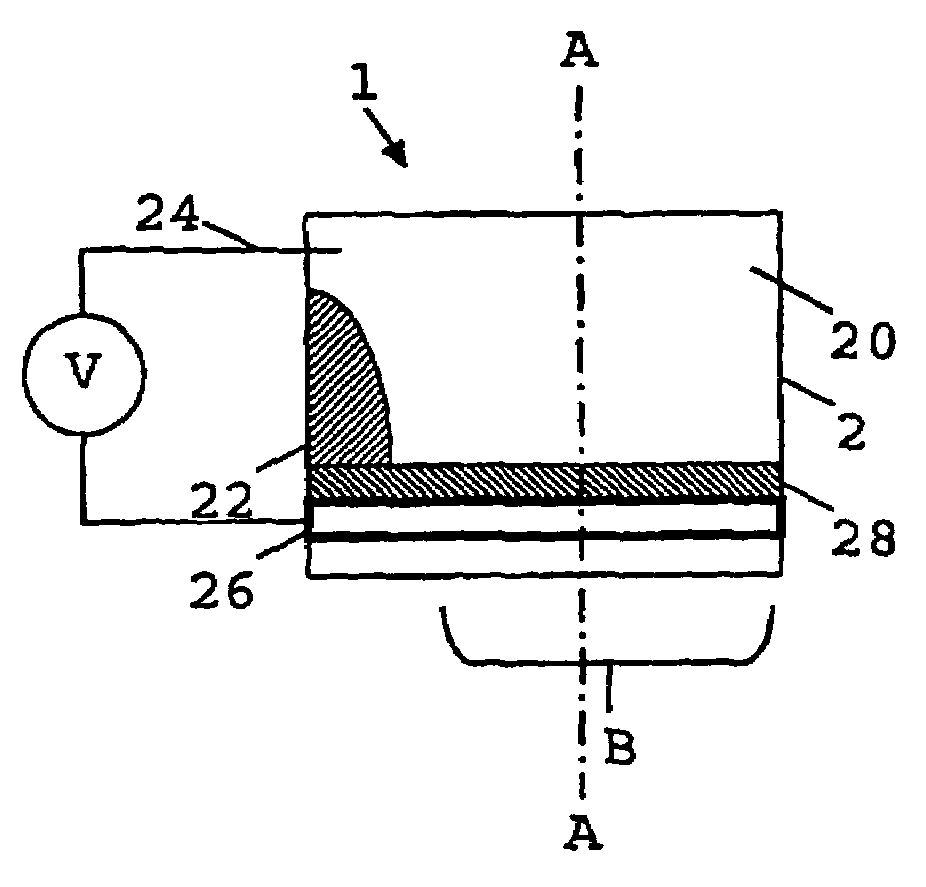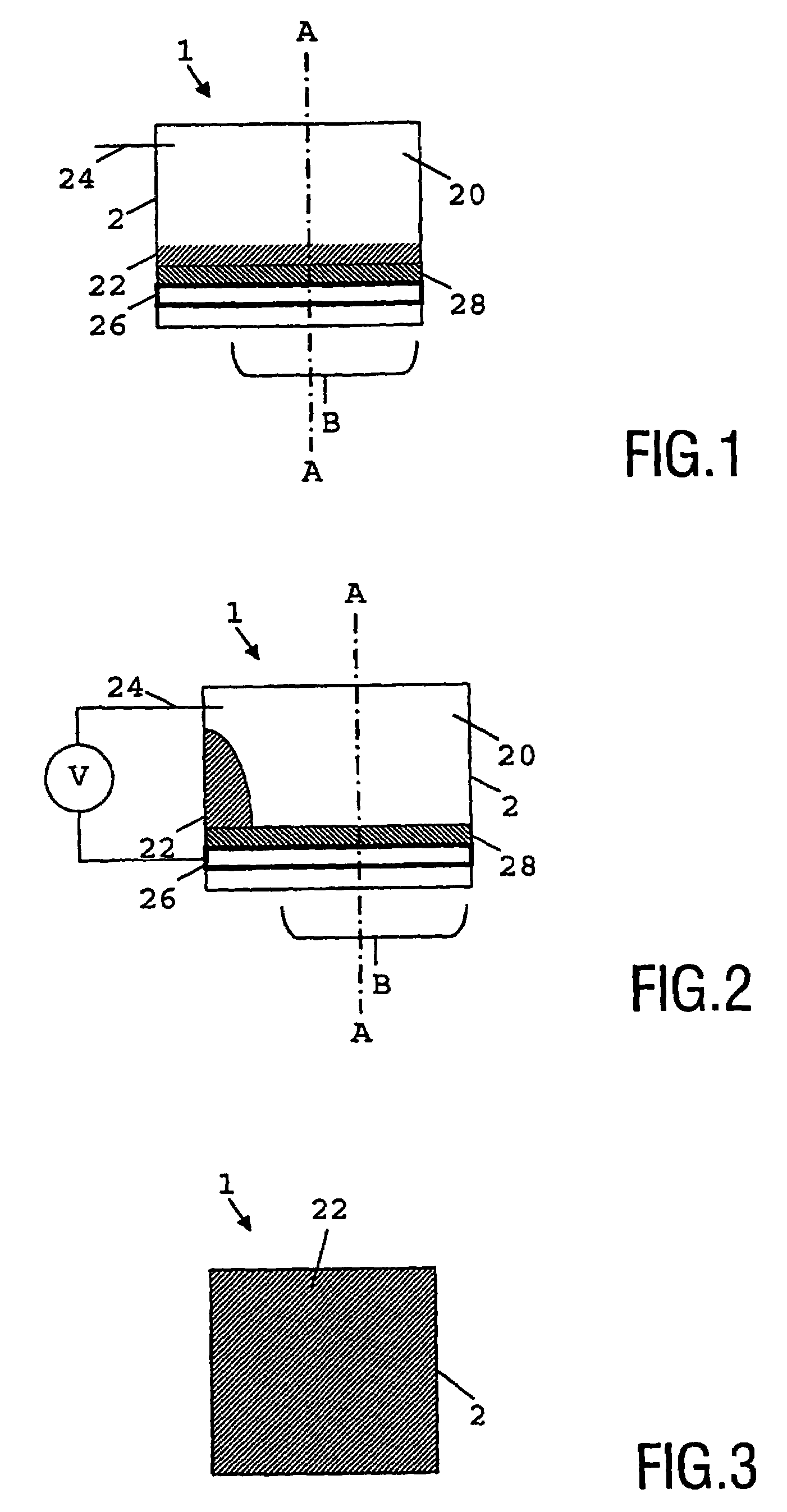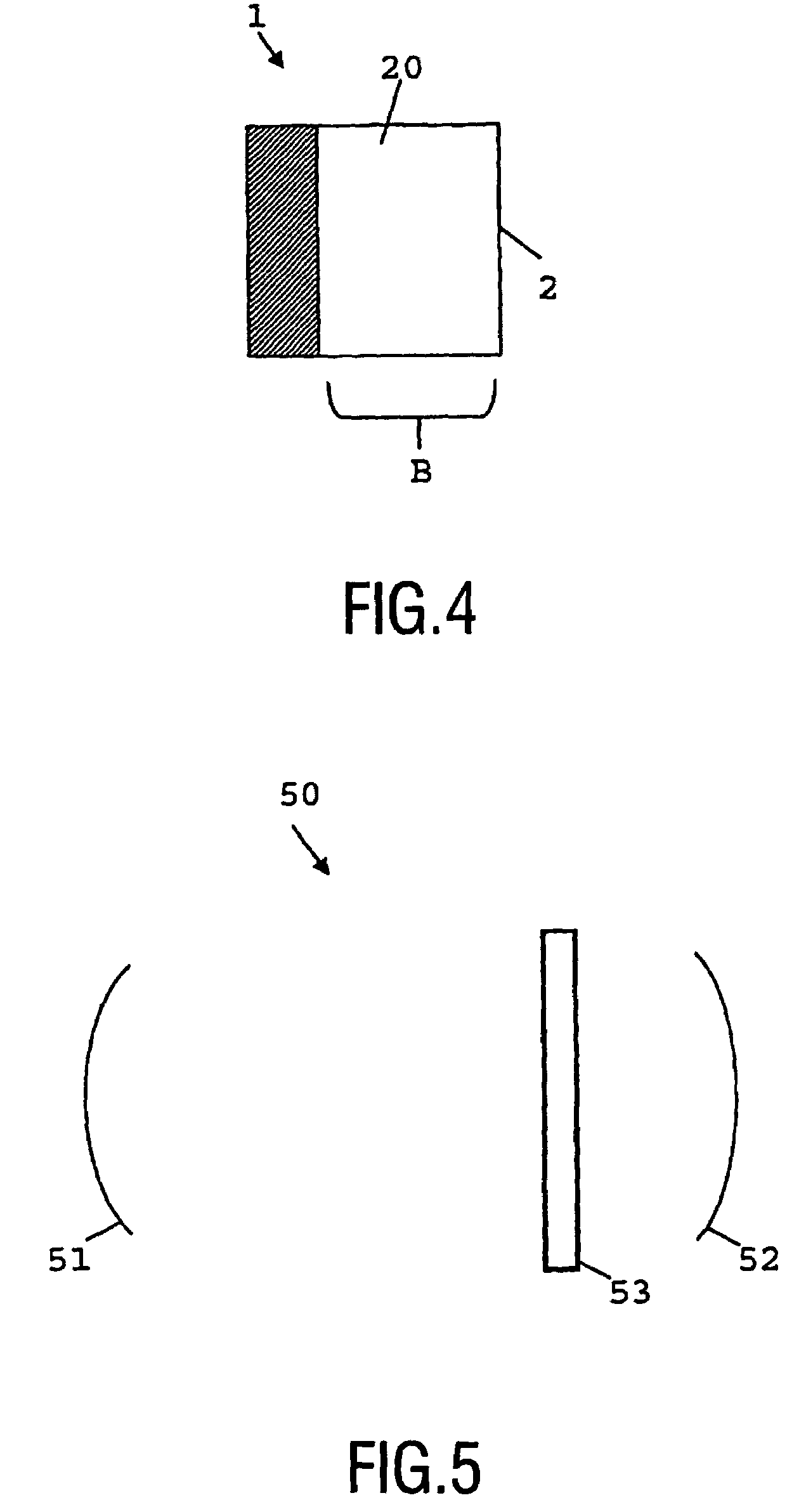Switchable optical element
a technology of optical elements and switches, applied in the field of switches, can solve the problems of limited lifespan, mechanical moving parts are subject to wear, and can be relatively large and expensive to produce, and achieve the effect of high degree of uniformity
- Summary
- Abstract
- Description
- Claims
- Application Information
AI Technical Summary
Benefits of technology
Problems solved by technology
Method used
Image
Examples
Embodiment Construction
[0028]The present inventors have realised that it is possible to overcome the drawbacks associated with the device 100 of FIGS. 12 and 13, and have provided a switchable optical element which is compact, has no mechanical moving parts and can be used in a number of applications. By providing a switchable optical element in which a body of fluid is arranged to move substantially transverse to the optical axis of the element it is possible to achieve a large number of effects, for example a variable aperture diaphragm, a switchable colour filter and a shutter. The operation of a first embodiment of the present invention working as a shutter will now be described.
[0029]FIG. 1 shows a side view of a switchable optical element 1 according to a first preferred embodiment of the present invention in a first state. The optical axis of the switchable optical element 1 is parallel to the line A-A, and the active area of the device extends over the region B. The switchable optical element 1 co...
PUM
| Property | Measurement | Unit |
|---|---|---|
| diameters | aaaaa | aaaaa |
| diameter | aaaaa | aaaaa |
| wettability | aaaaa | aaaaa |
Abstract
Description
Claims
Application Information
 Login to View More
Login to View More - R&D
- Intellectual Property
- Life Sciences
- Materials
- Tech Scout
- Unparalleled Data Quality
- Higher Quality Content
- 60% Fewer Hallucinations
Browse by: Latest US Patents, China's latest patents, Technical Efficacy Thesaurus, Application Domain, Technology Topic, Popular Technical Reports.
© 2025 PatSnap. All rights reserved.Legal|Privacy policy|Modern Slavery Act Transparency Statement|Sitemap|About US| Contact US: help@patsnap.com



